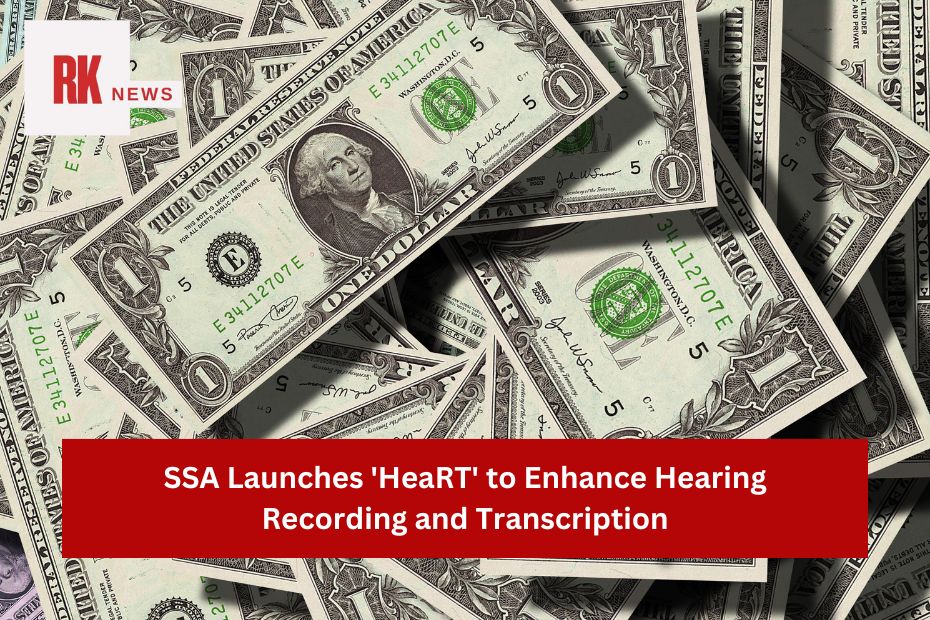On Monday, March 17, 2025, the Social Security Administration (SSA) marked a historic milestone with the launch of its HeaRT (Hearing Recording and Transcription) system—a groundbreaking AI-powered platform designed to transform disability and retirement benefit hearings. Coupled with sweeping policy reforms under the Social Security Fairness Act, these initiatives signal the agency’s aggressive push to modernize operations, slash inefficiencies, and deliver equitable support to millions of Americans.
The HeaRT System: A Technological Leap for SSA Hearings
The HeaRT system replaces decades-old recording equipment with advanced artificial intelligence, addressing long-standing complaints about delays, transcription errors, and technical glitches. Here’s how it works:
Key Features & Benefits:
- AI-Driven Precision:
- Leverages natural language processing (NLP) to generate 99% accurate real-time transcriptions, eliminating manual errors.
- Automatically flags key phrases (e.g., medical terms, legal jargon) for faster case reviews.
- Multi-Format Compatibility:
- Seamlessly integrates with in-person, phone, and video hearings, ensuring consistency across all platforms.
- Reduces setup time by 70%, allowing staff to focus on beneficiary needs.
- Cost Savings & Sustainability:
- Retires outdated tape recorders, microphones, and physical storage systems, saving $5 million annually in hardware and maintenance.
- Savings will fund expanded telehealth services and faster claims processing.
- User-Centric Design:
- Provides instant access to transcripts for beneficiaries and representatives via a secure portal.
- Reduces average hearing duration by 25%, minimizing stress for vulnerable applicants.
Impact on Stakeholders:
- Beneficiaries: Faster decisions, fewer rescheduled hearings, and transparent access to records.
- SSA Staff: Streamlined workflows reduce burnout and administrative backlog.
- Taxpayers: Annual savings reinvested into fraud prevention tools and customer service training.
Policy Overhaul: The Social Security Fairness Act & Taxable Earnings Cap Adjustment
Alongside technological upgrades, the SSA rolled out two major policy changes to address systemic inequities and stabilize funding:
1. Elimination of WEP and GPO (Social Security Fairness Act)
- Windfall Elimination Provision (WEP): Previously reduced benefits for public-sector workers (e.g., teachers, police) who also earned pensions from jobs not covered by Social Security.
- Government Pension Offset (GPO): Slashed spousal or survivor benefits for those receiving government pensions.
Changes:
- 3.2 million public servants will now receive full Social Security benefits, retroactive to January 2024.
- Example – A retired Texas teacher receiving a $1,800 monthly pension and a $1,200 spousal Social Security benefit used to have their Social Security reduced to $600 per month under the Government Pension Offset (GPO). Now, with the changes, they will receive the full $1,200 spousal benefit without any reduction.
2. Higher Taxable Earnings Cap for 2025
- The maximum income subject to Social Security payroll taxes will increase to $176,100 (up from $168,600 in 2025).
- Impact: High earners will contribute an additional $465 annually, bolstering Social Security’s trust funds amid rising retiree demographics.
Why do These Changes Matter?
- Closing the “Public Service Gap”:
- The Fairness Act rectifies a decades-old disparity that punished educators, firefighters, and other civil servants for their career choices.
- Retroactive payments, averaging $6,000 per beneficiary, will add $19.2 billion to local economies.
- Future-Proofing Social Security:
- The taxable cap adjustment extends the program’s solvency by capturing more revenue from top earners.
- Combined with HeaRT’s $5 million/year savings, these steps buy time for Congress to address the 2034 trust fund depletion crisis.
- Digital Transformation:
- HeaRT positions the SSA to handle a projected 40% surge in disability claims by 2030, driven by aging Baby Boomers and chronic illness rates.
Critics’ Concerns & Next Steps
While advocates praise the reforms, some warn of lingering challenges:
- HeaRT’s Limitations: Rural applicants with poor internet may struggle with video hearings.
- Funding Gaps: The 5millionsavedbyHeaRTisafractionofthe5millionsavedbyHeaRTisafractionofthe70 billion needed to avert 2034 benefit cuts.
SSA’s Response:
- Pilot programs for offline HeaRT compatibility will launch in Q3 2025.
- Commissioner Martin O’Malley urged Congress to “build on this momentum” by expanding payroll taxes to investment income.
Conclusion: A New Era for Social Security
The SSA’s 2025 reforms blend cutting-edge technology with progressive policymaking to tackle 21st-century challenges. For beneficiaries, this translates to fairer benefits, quicker resolutions, and a system better equipped to serve future generations.
What to Watch in 2025:
- October 2025: Official COLA announcement for 2026 (projected 2.2%).
- December 2025: Deadline for retroactive Fairness Act payments.
Stay informed—your benefits depend on it. 🔍📈
